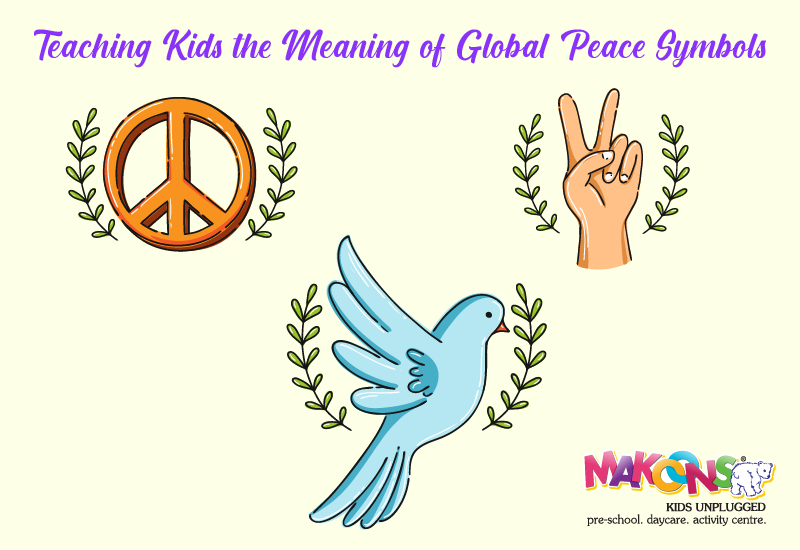From playground chalk to posters on classroom walls—peace signs are everywhere. But do kids really get them?
Probably not.
Not yet.
See, in a world where noise and conflict often win the spotlight, teaching peace to children isn’t just a nice idea. It’s vital. And one of the easiest, most beautiful ways to begin?
Symbols.
Simple. Visual. Powerful.
Yep—peace symbols for kids.
Because they’re more than just doodles or decorations. They carry stories. Histories. Hopes.
So, let’s unpack the global symbols explained—in a way little hearts and minds can hold onto. Ready?
Why Teach Peace Through Symbols?
Here’s the thing. Kids learn with their eyes first.
Before ABCs. Before writing their names.
A heart? Love.
A smiley face? Happy.
And that dove flying across the sky? Peace—if someone takes the time to explain.
Symbols stick.
They cross borders. Build bridges. Start conversations.
Teaching peace through symbols helps children:
Understand kindness without needing a long lecture
Feel what unity and calm really mean
Learn empathy (big word, big feelings)
Respect different cultures
Solve stuff peacefully (instead of grabbing that toy and running)
So… how do we begin?
Top Peace Symbols for Kids (And Their Simple Stories)
Let’s go global. With meaning made easy.
🕊️ The Dove and Olive Branch
Where it’s from: Ancient Greece + Bible stuff
What it means: Hope. Calm. New beginnings.
Storytime: Imagine a huge storm. Everything’s wet and scary. Then—a dove. It brings back a little green twig to say, “Hey. It’s safe now.” That one tiny moment? Became a forever symbol of peace.
Try this: Let kids draw a dove. Then write a wish for peace in the olive branch it carries.
☮️ The Peace Sign
Where it started: UK, 1958
What it means: “No more nukes,” basically.
Storytime: People were worried. Big weapons. Bigger danger. So someone clever made a symbol using the letters “N” and “D” for Nuclear Disarmament. It spread like wildfire.
Try this: Make mini peace badges from paper. Talk about things kids can stop doing to make home or school more peaceful. Like yelling. Or snatching. Or frowning too hard.
🧘 The Lotus Flower
Where it grows: Asia
What it means: Stay calm. Be kind. Even when life’s messy.
Storytime: The lotus grows in mud. Real mud. But it still blossoms into this beautiful flower. It doesn’t complain. It just blooms. That’s peace, right there.
Try this: Hand out lotus coloring pages during quiet time. Put on soft music. Let calm bloom too.
🕉️ The Om Symbol
Where it’s from: Ancient India
What it means: Peace inside.
Storytime: “Om” isn’t just a sound. It’s like a deep breath for your soul. People chant it during yoga or prayer. It makes everything feel still. Like a hug from the inside.
Try this: Practice saying “Om” together. Hold hands. Breathe slow. Even wiggly kids love it after a minute.
✌️ The Peace Hand Sign
Where it came from: WWII, then the ‘60s
What it means: First, victory. Then—peace and love.
Storytime: Soldiers used it to say “Victory!” But later, people used it at music festivals, marches, anywhere they wanted to say—“Let’s love, not fight.”
Try this: Have a “Peace Pose Day.” Take pics of kids flashing the peace sign. Ask them: What does peace mean to you?
Simple Ways to Make It Stick
Okay. We’ve got the global symbols explained. Now what?
📅 International Day of Peace – September 21
Make a big deal out of it. Peace posters. A peace walk. Music. Snacks. And of course—symbols everywhere.
Questions That Make Kids Think
Symbols are a start. But conversations? That’s where the magic happens.
Ask things like:
What does peace feel like?
When do you feel most peaceful?
Who do you think brings peace in your life?
Which peace symbol do you like best?
You’ll be surprised by their answers. Kids know stuff. More than we give credit for.
Read More – Top Cheapest Play School Franchise Opportunities
Final Thought: Peace Grows With Us
Kids are little mirrors. They reflect what we show them.
Show them peace. Talk about it. Draw it. Chant it.
Live it. Every day—even a little.
Because those peace symbols?
They aren’t just drawings.
They’re doorways.
To a softer world.
A braver one.
Kinder, too.
So next time a child flashes the peace sign or colors in a lotus—smile.
They’re not just copying.
They’re learning.
They’re becoming.
Let’s keep the symbols alive.
Not just on paper. But in how we live. How we love.
And how we teach.

